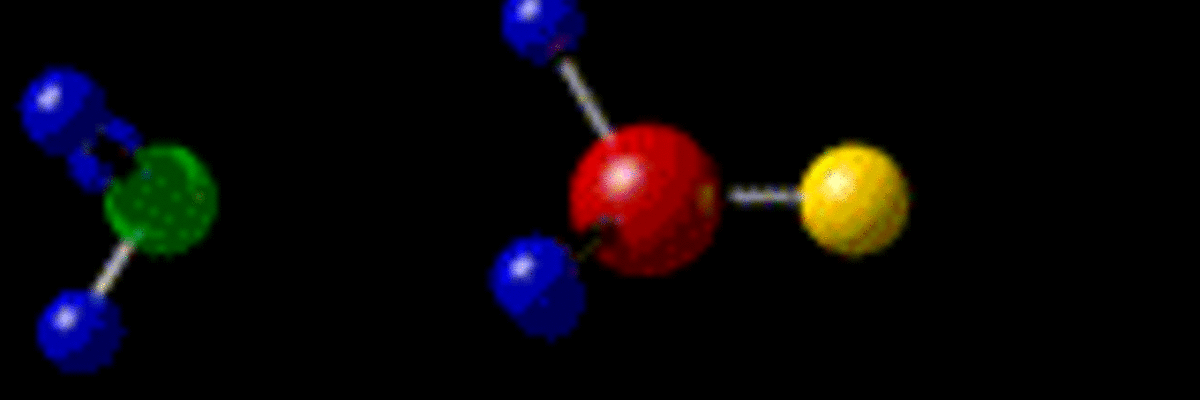Biomolecular processes take place in complex environments. Our group develops theoretical and computational methods to cope with this complexity in order to understand some biological questions. Of particular interest are enzymatic reactions in solution and macromolecular interactions in cell.
Our research includes development of combined quantum mechanical and molecular mechanical (QM/MM) methods for processes involving changes in electronic structure. A significant effort is devoted to the development of a full quantal force field, based on the explicit polarization (X-Pol) theory. Additionally, we develop valence bond-based techniques for condensed-phase and biochemical transformations, making use of block-localized molecular orbital theory (also known as Block-Localized Wavefunction or BLW) and block-localized density functional theory (BLDFT). VB-like configurational state functions can be constructued with BLDFT, which are used in a multiconfigurational approach, called multistate density functional theory (MSDFT). Unlike the traditional Kohn-Sham DFT (KSDFT), the ground-state density is not used to determine the ground-state energy.
We make heavy use of the computational resources at the University of Minnesota Supercomputing Institute. The following information provides you with a brief description of some of the research areas and projects that have been investigated in our group.
If you would like to receive reprints of publications or additional information concerning our research, you may direct your requests to Professor Gao at jialigao.org.
MSDFT: A Novel Multistate Density Functional Theory
In collaboration with Professor Yirong Mo, we recently introduced a multistate density functional theory (MSDFT) in the framework of valence bond approach for studying electron transfer and chemical reactions. The method is based on a block-localized density functional theory (BLDFT), first described by Professor Yirong Mo, for the construction of valence bond-like electronic configurations, or constrained DFT. Since DFT is used to determine the valence bond multistate Hamiltonian matrix elements, this method is called multistate density functional theory (MSDFT) or VBDFT. MSDFT is an extention of the mixed molecular orbital and valence bond theory, called MOVB, which we introduced in 2000.
The key features of MSDFT include that the electron density of the adiabatic ground state is not directly computed nor used to obtain the ground-state energy, rather, it is obtained by diagonaling the multistate valence bond Hamiltonian. MSDFT represents a departure from the standard single-determinant Kohn-Sham density functional theory.
Because MSDFT is a multistate multiconfiguration theory, it has the advantage of including both dynamic (through DFT) and static (through VB theory) correlation effects, providing a viable approach for certain systems and reactions to overcome self-interaction errors in current approximate KS-DFT. Significantly, the BLDFT method is a versatile theory that can be used to analyze conventional KS-DFT results to gain insight into chemical bonding properties, including intermolecular interaction energy decomposition analysis.
X-Pol: A New Paradigm for Biomolecular Simulations
The X-Pol theory, first introduced in 1997, is both a fragment-based electronic structure method and a quantal force field for macromolecular systems.
Molecular mechanics dates back to the pioneering studies of steric effects independently by Hill and by Westheimer, whereas the force field for biomolecular simulations was established by Lifson in the 1960s. Tremendous progress has been made in the past fifty years; however, a sobering fact is that the basic functional form, including polarization terms, has hardly changed. A fundamental change in force field development is warranted in order to increase the predictability of computational biology.
In the X-Pol potential, the system is treated explicitly by electronic structure theory and the wave function (or electron density) is optimized by self-consistent field (SCF) method. The internal energy terms and electrostatic potentials used in classical force fields are replaced and described explicitly by electronic structure theory. Naturally, electronic polarization and charge transfer are treated by the theory. Furthermore, such a method can be directly used to model chemical reactions, electron transfer, and electronically excited states.
The X-Pol potential for macromolecular simulations is being developed collaboratively between our group and the group of Professor Don Truhlar. The feasibility of the X-Pol potential for modeling biomolecular systems has been recently demonstrated.
For more depth and slides on this theory, click the following link: Theory of the X-Pol Method
Biomolecular Interactions & Catalysis
We are applying combined quantum mechanical and molecular mechanical methods both at the semiempirical and ab initio level to enzymatic processes in solution. At present, we focus on three fundamental areas of biological interest: (1) mechanisms of enzymatic reactions including phosphate transfer processes and carbocation cyclizations, (2) electronic and chemical transformations at the electronic excited states, and (3) vibrational energy relaxation and dynamics of substrate-protein interactions in the enzyme active site.
We seek the general principles that govern enzyme catalysis by understanding the unique mechanism and action of individual enzymes. Some of our work on enzyme catalysis, including a plethora of illustrative examples can be accessed with the following link: Enzyme Catalysis
Structure, Reactivity and Solvation
Solvent effects have profound influence on chemical reactions and reactivity. In many cases the direction of a reaction may be altered by changing the solvent. The information gained in computer simulations may be used in rational design of catalytic agents for organic synthesis. Several reactions are currently being investigated, including photoisomerization, pericyclic and nucleophilic addition/substitution reactions. We have recently developed a method, combining features of molecular orbital and modern valence bond theory, to investigate the resonance and stereoelectronic effects in organic molecules.
Materials
Another exciting area of research is microporous materials and catalysis. In particular, the adsorption, binding and reaction mechanism associated with catalytic processes in zeolites are being studied. Microporous materials such as zeolites are powerful industrial catalysts and have a wide range of applications. Computational methods developed in our laboratory are capable of providing answers at the molecular level to numerous questions of chemical and industrial interest. An understanding of the catalytic mechanism will enable chemists to design and synthesize more powerful catalysts.
Methodology
Undoubtedly, the key factor that determines the success of condensed phase simulations is the availability of accurate intermolecular potential functions. Traditionally, empirical MM potentials are used; however, the form of these functions are not appropriate for describing chemical reactions. The combined QM/MM approach takes advantage of the accuracy and generality of QM calculations but still retains the computational efficiency of the MM force field by treating the solute quantum-mechanically and the surrounding solvent molecules classically. The use of QM methods in statistical mechanical Monte Carlo and molecular dynamics simulations allows us to simulate chemical processes in solution. Current interest includes development of algorithms for even more accurate QM/MM calculations, a mixed molecular orbital-valence bond (MOVB) approach for simulating chemical processes, and molecular orbital-based polarization force fields.

